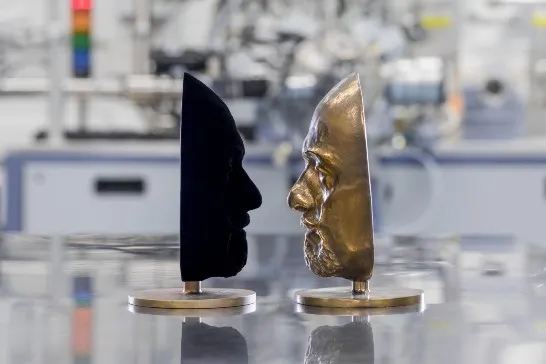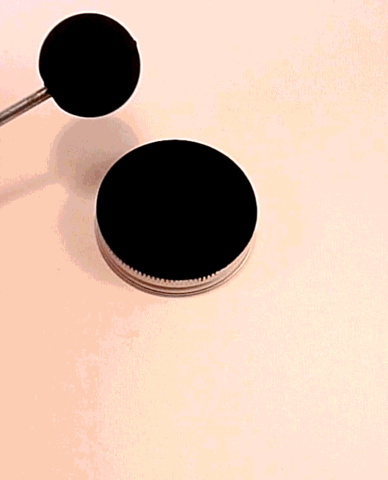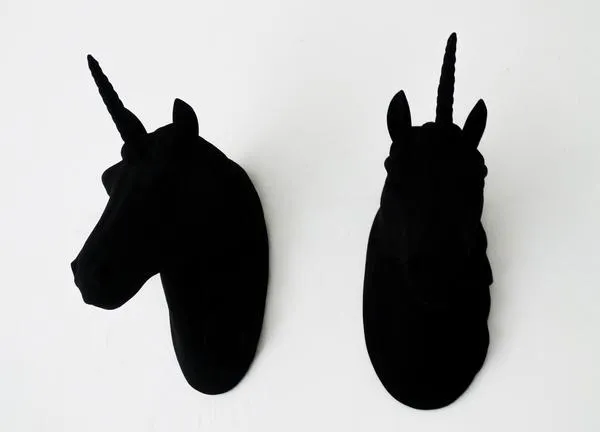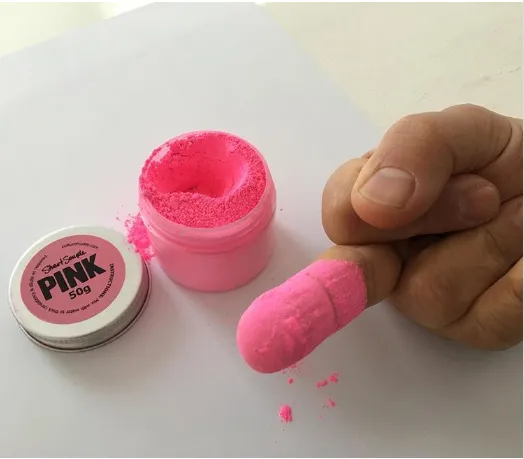
/Hello darkness, my old friend/
/I've come to talk with you again/ - Simon & Garfunkel
Note: By adding this product to your cart you confirm that you are not Anish Kapoor, you are in no way affiliated to Anish Kapoor, you are not purchasing this item on behalf of Anish Kapoor or an associate of Anish Kapoor. To the best of your knowledge, information and belief this material will not make it's way into the hands of Anish Kapoor. - Stuart Semple, selling ... well, not Vantablack.

Many years ago, Gene Wolfe published a ridiculously good book. While I no longer recall the name, I do know it was part of his Shadow of the Torturer series starring a protagonist named Severian who (according to Severian) was blessed with a perfect memory. He used this ability to, among other things, lie to the reader relentlessly, which makes those books some of the most challenging science fiction ever written.
However, today's topic is not Severian's memory but his attire. I will now quote:
"All our guild cloaks are voluminous, and this one was more so than most since the brother I had replaced was large of frame. Furthermore, the hue fuligin, which is darker than black, admirably erases all folds, bunchings, and gatherings so far as the eye is concerned, showing only a featureless dark."
Turns out that the fuligin thing? That Gene Wolfe came up with as a neat little scifi detail in the 1980s? Has been invented in real life. Say hi to Vantablack.

What is Vantablack? Assuming you've decided not to Google and instead just let me tell you, Vantablack is the most expensive and advanced of a sub-class of metamaterials known as superblack materials. Like the name suggests (and, you know, the title I put at the very top of this thing), superblacks are materials or pigments that are much darker than normal naturally-occurring blacks like coal or soot or the night sky. These synthetic materials are literally darker than black.

First created by Surrey Nanosystems in 2014, Vantablack is the blackest of the darker-than-blacks because it is able to absorb 99.96% of all the light that falls on it, more than any of the others as far as I can tell. For those of you who still remember secondary school fine art classes (or those of you currently in it), you might recall that black is black (and not for instance, red) because it absorbs all the other colours just as white is white because it reflects them all.
Well then! First thing you need to know about Vantablack is that it's not actually a colour, it's a material. Specifically, the original Vantablack wasn't a paint, an ink or a fabric. Instead it was a special coating made from millions of carbon nanotubes, each one measuring around 20 nm (nanometres) (roughly 3,500 times smaller than a human hair) by 14 to 50 microns. To put that in perspective, 1 nanometre equals 0.001 of a micron(!) One square cm of this stuff contains approximately 1 billion of these nanotubules.
It is -- or was -- made through a deeply elaborate process involving depositing the vertically aligned nanotubule arrays (hence "VANTA") in patterns inside a special chamber. It was apparently massively expensive to make in any quantity and could only be created/used in small amounts. In whatever case, the end result is made of the aforementioned nanotubules that stand up like ... okay, imagine an ultra-dense forest of sub-microscopic trees that are so closely packed together that they literally catch light in their branches and smother it there till it turns into heat. At the level of the human eye, it manifests as a featureless black, the total absence of colour. Where colour is light bouncing back to you off the objects in front of you, with Vantablack nothing bounces back (except for a piddling 0.04% that won't even reach your eyes anyway.) The only reason you can see it at all is because there's other stuff around it to create contrast.
The net effect is something like a really crude photoshop of reality itself.

Anyway, by 2016, the brilliant folks at Surrey Nanosystems figured out how to make it without requiring such an elaborate process. They called the new refined version Vantablack S-VIS. The major difference? The nanotubes aren't standing up like trees anymore, they're lying all over the place like someone emptied huge siloes of nanoscopic spaghetti ... well, all over the place. This trick means this version can be sprayed onto any surface or object now -- but still requires a special chamber and -- haha -- only absorbs 99.8% of the light that hits its surface instead of 99.96% like the original.
You may not have noticed yet but I'm hype like a three-year-old about the sheer unbridled coolness of this thing. Clearly I'm not alone because it didn't take long for everyone from NASA and the military to architects and artists to come calling, clamouring for access to this wonder material for all kinds of cool s*** that we're literally about to talk about right now. Later on, we'll talk about how one of those artists (who is apparently ridiculously rich) bought the exclusive rights to use it for artistic endeavours and how he managed to piss off every other artist in the universe in the process.

So. That's all well and good but I'm sure you're asking the next logical question: @edumurphy, what is this stuff good for anyway? What can you actually do with it? Okay, for one, the folks at NASA want to use it to line the insides of their satellite cameras and telescopes so that there will be absolutely no optical interference or any light getting into the telescopes that they don't want to. That means much better pictures of both earth and sky. Due to the fact that it is actually physically very fragile against direct contact (basically, don't touch anything coated in the stuff) but very robust against g-forces (because it weighs pretty much nothing), that makes it perfect for putting into stuff that needs to be launched into space.
What else? How about solar panels? Vantablack works because it absorbs all the light and turns it into heat. That makes it potentially a game-changer for solar-collector arrays.
Some people might think this would make for cool stealth camouflage for the military. Those folks aren't paying attention to this here and they didn't pay attention in physics class. Not only would such a superblack be, like, crazy-visible at night (or day), it would also cook the soldiers (or drones or militarized Boston Dynamics WildCats) alive in their own body heat. So no. It would however make an amazing defense against laser weapons when those start getting deployed on the battlefields of the near-future as well as against lidar detection.
They can put it in cameras, microscopes, cinema projectors (maybe even TVs, why not?) and all sorts of optical and scanning equipment to enhance their functionality. All very proper and scientific ... but:
That's the stuff we know. If I were to speculate, some cool ideas for this would be:
- for one, it would look really badass in planetariums
- properly arranged and aligned, could be used to positively or negatively mess with people's neurology (like a basilisk hack for neurotherapy)
- sensory deprivation/isolation tanks
- illusionists, stage magicians, any kind of stage performance really could be greatly enhanced by the ability to achieve all manner of effects that would normally need CGI
- speaking of CGI, the Hollywood applications abound
- if they ever figure out a version that works with fabric, the cosplay possibilities are bananas
- see also: porn (I'll let you picture that. You're welcome.)

Leaving the strictly practical applications, a veritable deluge of artists, architects and designers are foaming at the mouth for a shot at it. The MCT S110 Evo Vantablack luxury wristwatch as seen above is one such product (costs like $95,000 USD) There are car designers in talks to use it for their dashboards so that all the dials and whatnot will look like they're floating in dark space as you drive.
Then there's Anish Kapoor.
Kapoor is a sculptor who has been in the game for decades and unlike most artists, has become fabulously rich from his work. When he learned of the existence of Vantablack, he somehow convinced Surrey Nanosystems to grant him exclusive rights to use it in artistic endeavours. When other artists learned of this, the reactions ranged from disappointed to furious. One however was vengeful and that man was Stuart Semple.

We now return to your regularly scheduled programming:
A much younger painter, Semple had come across mention of Vantablack and hoped to work with it only to learn of Kapoor's monopoly. He got petty yet inventive (and hilarious) and thus created Pinkest Pink of all the ridiculous things.

Kapoor's response? That👆 👆😁
This started one of those ludicrous social media feuds betweent the two artists, became an emergent publicity stunt for the two of them (well, more so for Semple) and climaxed in Semple crowd-sourcing the creation of Black 2.0, a ordinary acrylic-based paint that nonetheless comes incredibly close to matching the superblack properties of Vantablack. As Semple says:
IT IS IMPORTANT TO NOTE: this is not the blackest black in the world. It is however a better black than the blackest black in the world as it is actually usable by artists. *
*Except Anish Kapoor.
Like I said, hilarious. He also created a hashtag #sharetheblack, other [COLOUREST COLOURS] and of course that quote you probably wondered about back up there at the very top of the page. All his products require the customer to confirm that they are not Anish Kapoor before they can be purchased.
Well, that's the story of Vantablack as told by yours truly. I beg the indulgence of any materials science people in the audience for anything I got wrong. Thanks so much for reading and (hopefully) see you in the comments!
REFERENCES
http://mentalfloss.com/article/77190/6-facts-about-vantablack-darkest-material-ever-made - the article that got this particular ball rolling.
https://www.wired.com/story/vantablack-anish-kapoor-stuart-semple/ - the fascinating story of the petty #firstworldproblems feud between these two artists as told by Wired Magazine.
https://www.surreynanosystems.com/vantablack/vantablack-s-vis - The horse's mouth
https://www.surreynanosystems.com/vantablack/faqs - horse's mouth 2.0

You might also enjoy some of my previous posts such as:
Human History X: The Mapmakers
Human History X: The Forgetful Storytellers
Human History X: The Users and The Used
or for something actually @steemstem:
Geospatial Big Data: The Magic of Maps and Money

Like what you just read? Donations are gleefully accepted in the crypto of your choosing :D Descending order of my preference if that matters to you 👇
Steem/SBD: @edumurphy
Dash: XdCpkRRxejck5tfXumUQKSVeWK8KwJ7YQn
Doge: DNwUsAegdqULTArRdQ8n9mkoKLgs7HWCSX
ETH: 0x09fd9fb88f9e524fbc95c12bb612a934f3a37ada
NKN: NaAKsxh3SycrXNkbJMxYsvfwWbDteBga8w (Oh, you don't know about Encocoin? Aight 😄)
BTC (if you really really have to): 1L9foNHqbAbFvmBzfKc5Ut7tBGTqWHgrbi



